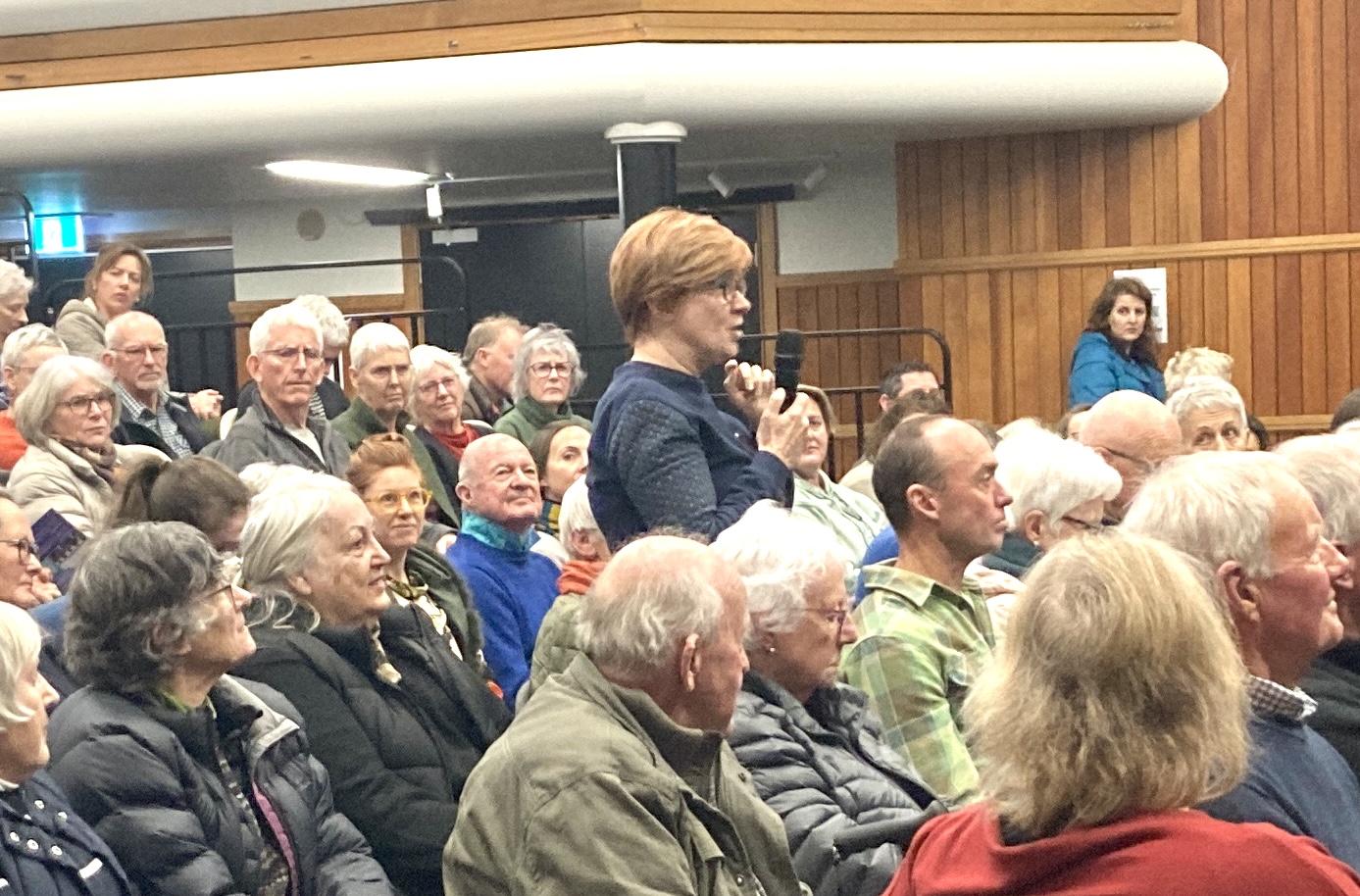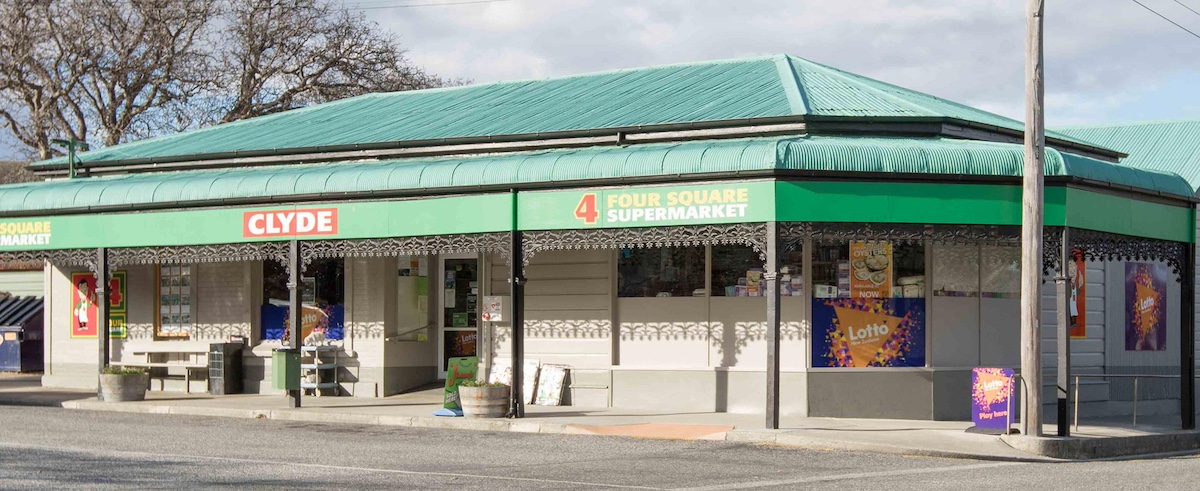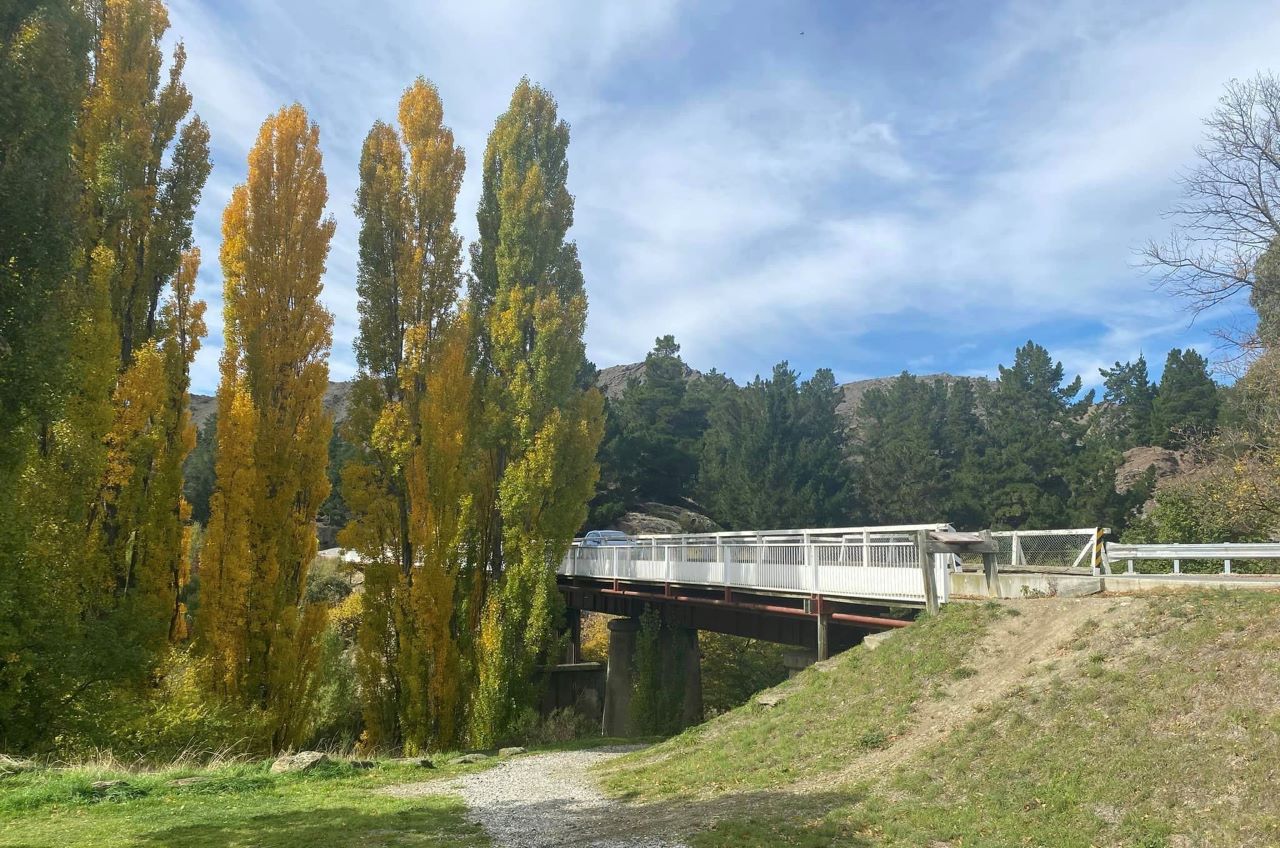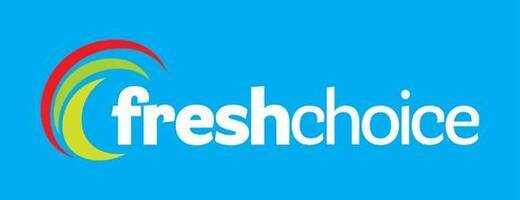‘Unmet health needs’ acknowledged at roadshow
Sue Wards l The Central App
03 July 2025, 6:00 PM
 A resident asks health leaders a question about funding on Tuesday. PHOTO: Central App
A resident asks health leaders a question about funding on Tuesday. PHOTO: Central AppCentral Otago and Upper Clutha residents filled the Lake Wānaka Centre to hear from associate health minister Matt Doocey and a panel of health leaders on Tuesday (July 1), but some attendees aren’t convinced the meeting will generate an improvement in access to health services any time soon.
Matt Doocey was joined by minister for rural communities Mark Patterson, Health NZ Southern general manager Craig Ashton, Health NZ Southern group manager integration Aroha Metcalfe, Health NZ Southern chief medical officer David Gow, Ministry of Health clinical chief advisor rural Helen Connole, and Ministry of Health Associate deputy director-general Steve Barnes.
Central Otago District Council (CODC) mayor Tamah Alley attended the roadshow, and told the Central App she was impressed with the turnout.
“Central Otago’s unmet needs are very similar to the Wānaka area - and we can’t keep relying on individuals to go above and beyond to fill the gaps,” she said.
“It’s promising that we’ve seen an influx of ministers in the past few months in the region, hearing and seeing firsthand what our health sector challenges are.
“The announcement that the clinical services planning will be completed by the end of the year is fantastic - we’re a big district and ensuring we have the right services in the right places are critical to improved access for everyone across Central Otago and Queenstown Lakes.”
The clinical services review was referred to throughout the hour-long Q&A session by Health NZ staff. The review is looking at how needs have changed in Central Otago and Queenstown Lakes, with clinical services “the priority” and the location of a regional hospital “the fundamental point of the review”, David Gow said.
Questions from the roadshow audience covered funding inequities, the lack of a free blood collection service in the Upper Clutha, children and young people's mental health, laboratory funding, workforce challenges, location of a regional hospital, cross party support for health service planning, public versus private health funding, and the deficiencies of the national travel assistance scheme.

The panel (with Matt Doocey, right) acknowledged clear health inequities in Central Otago and Queenstown Lakes. PHOTO: Health Action Wānaka
David said there was no defence to the “stark inequity" highlighted, while the associate health minister said: “Quite clearly the population here has got ahead of public services”.
One audience member asked how health staff had “missed the growth in the last ten years”.
Aroha referred to the “higher than expected” population growth in the region, while the associate health minister told the crowd of more than 300 people “you have just had significant population growth over time and investment hasn’t kept up”.
Matt focused on the importance of his “roadmap approach” (rather than strategies and plans) to identifying problems and implementing solutions.
“A large amount of the solutions are already in the community,” Matt also said, while the Health NZ staff also emphasised the need for communities to work in partnership with health service providers.
Health staff said they would return to the area at the end of August with the findings from the clinical review, which needed to be “done and dusted” by December.
Event MC Hauroa Taiwhenua Rural Health Network chief executive Dr Grant Davidson summed up the discussion by saying: “The inequity is being heard. Local people will put together a plan about how that inequity would be [addressed].”
The Central App spoke to Craig Ashton after the event, asking why it had taken health authorities so long to notice and act on population growth and health inequity in Central Otago and Queenstown Lakes.
“I can acknowledge people’s frustrations,” he said.
“I think it has been signalled in many reports for a long time that the health needs of Central Otago have been unmet. The population is growing and continues to grow. Particularly over the last few years it is showing an exponential growth and that has really put to the forefront the need to do something about it.
“... a whole lot of plans and strategies … have been in place for quite some time and I’ve read a lot of those and the translation of strategy into action is where we’re focused right now with the clinical services planning,” he said.
NEWS
WHAT'S ON






